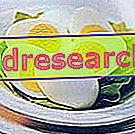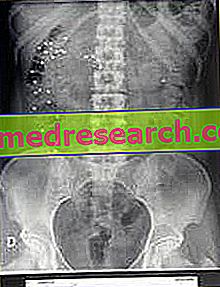Proteins and Amino Acids
Proteins are macromolecules consisting of many small units linked together through a bond called peptide.
Each single unit is called amino acid and is characterized by the simultaneous presence of a positively charged amino group (NH2 → NH3 +) and a negatively charged carboxyl group (COOH → COO-). The remaining portion of the amino acid molecule varies from amino acid to amino acid and gives it particular characteristics (there are hydrophobic, neutral, acid and basic amino acids).

The individual amino acids are then absorbed by the small intestine and used mainly for protein synthesis. This term refers to a reverse process to the digestive process that aims to provide the body with the materials for the growth, maintenance and reconstruction of cellular structures. This function is called "Plastic".
Because they are essential
Some amino acids, in addition to participating in protein synthesis, can be used as such to perform particular functions (involved in the immune response, in the synthesis of hormones and vitamins, in the transmission of nerve impulses, in the production of energy and as catalysts in many metabolic processes) .
If necessary, our body has the ability to generate certain amino acids from others. Of the winds that participate in protein synthesis only eight are not synthesizable (or at least they are not in sufficient quantities) and are therefore defined as ESSENTIAL AMINO ACIDS .
In order for protein synthesis to take place the relative concentrations of essential amino acids must be optimal. If even one of these (limiting amino acid) is deficient the protein synthesis becomes ineffective.
What are they?
Amino acids are defined as essential that the human body cannot synthesize in sufficient quantity to meet its own needs.
For the adult there are eight and more precisely: phenylalanine, isoleucine, lysine, leucine, methionine, threonine, tryptophan and valine .
During the period of growth to the eight mentioned, a ninth must be added, histidine . In this period of life the demands of this amino acid are in fact higher than the capacity for endogenous synthesis.
ESSENTIAL AMINO ACIDS | NON ESSENTIAL AMINO ACIDS |
| Phenylalanine | Alanine |
| Isoleucine (a) | Arginine (c) |
| Leucine (a) | Asparagine |
| Lysine | Aspartate |
| Methionine | Cysteine (b) |
threonine | Glycine (c) |
| Tryptophan | Glutamate |
Valina (a) | Glutamine (c) |
| Histidine | |
| Prolina (c) | |
| Serina | |
| Tyrosine (b) | |
| Taurine (c) * | |
| to. branched amino acids | |
| b. semi-essential amino acids | |
| c. conditionally essential amino acids | |
- Cysteine and tyrosine are considered as semi-essential amino acids, as the body can synthesize them from two other essential amino acids ( methionine and phenylalanine) .
- Amino acids are defined as conditionally essential amino acids which play a fundamental role in maintaining homeostasis and the functions of the human body and which, in some physiopathological conditions, may not be synthesized at sufficient speed. There are five conditionally essential amino acids (arginine, glycine, glutamine, proline and taurine).
- Histidine and arginine (only for some authors) are considered essential only during the growth phase; according to others the histidine would be essential also during the adult age, despite its removal from the diet does not immediately induce a negative nitrogen balance, as it happens, instead, for the other essential amino acids.
- * Taurine is necessary for the proper functioning of the brain and liver; for some species it is an essential nutrient, while for the human this essentiality is not so certain.
Food Sources
An individual's diet should provide all the essential amino acids and enough amino acid nitrogen to synthesize the non-essential ones.
In fact, the scarcity or lack of an essential amino acid acts as a limiting factor for endogenous protein synthesis.
In nature, there are foods that contain sufficient amounts of all essential amino acids. In this case we speak of noble or complete proteins, generally found in meat, eggs, fish and dairy products.
Some foods are characterized instead by an "absolute" or "relative" deficiency of essential amino acids. In this case we speak of incomplete proteins, generally found in foods of vegetable origin.
It is defined as limiting that essential amino acid present in the lowest concentration compared to the requirement.
- Cereal proteins, for example, have relative deficiency in some amino acids such as lysine and tryptophan.
- Legumes, vegetable foods rich in proteins, contain good amounts of lysine but are lacking in methionine.
- Also meat, dairy products and eggs contain a limiting amino acid (generally methionine or tryptophan). However, its concentration reaches levels sufficient to guarantee the optimal performance of protein synthesis.
A suitable amount of cereals and legumes is a well balanced protein complex able to cover the need for essential amino acids. In this case we speak of mutual integration (or protein complementarity) as in the traditional combination of cereals with legumes.
Risk of Deficiency
The lack of an essential amino acid prevents the use of other amino acids for protein synthesis ONLY when its "reserve" in the blood amino acid pool is completely depleted. Translating this concept into practical terms, we discover that it is not mandatory to consume complementary proteins within the same meal because the organism has the possibility of drawing on endogenous "reserves" to cover specific deficiencies.
However, it is important for vegans to take a wide variety of plant foods every day, as these "stocks" are rather small.



